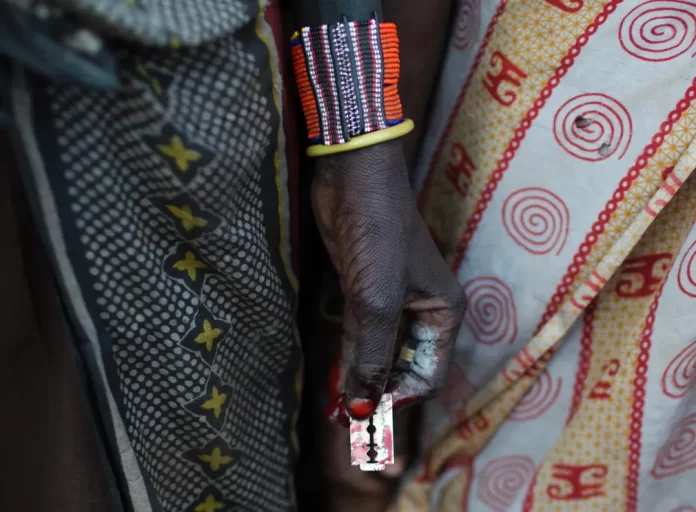Female genital mutilation (FGM) refers to “all procedures involving partial or total removal of the female external genitalia or other injury to the female genital organs for non-medical reasons.” The exact number of girls and women worldwide who have undergone FGM remains unknown; however, at least 200 million girls and women have been cut in 30 countries with representative data on prevalence.
Uma Balde who is around 6 years-old cries after she had been disciplined in the Muslim Fulani village of Dempel Jumpora.
FGM is practiced atleast in half of African countries but it is also found among some ethnic groups in Oman, the United Arab Emirates, and Yemen, as well as in parts of India, Indonesia, and Malaysia. The World Health Organization developed four broad categories for FGM operations.
Normal (L), Type I, Type II, Type III
Normal (L), Type 1, Type 2, Type 3
Type 1: Removal of the clitoral hood with or without removal of part or the entire clitoris.
Type 2: Removal of the clitoris together with part or all of the labia minora.
Type 3: Removal of part or all of the external genitalia (clitoris, labia minora, and labia majora) and stitching and/or narrowing of the vaginal opening leaving a small hole for urine and menstrual flow.
Type 4: All other operations on the female genitalia, including: Pricking, piercing, stretching, or incision of the clitoris and/or labia; Cauterization by burning the clitoris and surrounding tissues; Incisions to the vaginal wall; Scraping (angurya cuts) or cutting (gishiri cuts) of the vagina and surrounding tissues; and Introduction of corrosive substances or herbs into the vagina.
Complications are common and can lead to death, however some cultures insist on FGM.
Reasons for supporting FGM include: the beliefs that it is a “good tradition”, a religious requirement(s), or a necessary rite of passage to womanhood; that it ensures cleanliness or better marriage prospects, prevents promiscuity and excessive clitoral growth, preserves virginity, enhances male sexuality, and facilitates childbirth by widening the birth canal. Some people view it as treatment for lesbianism, masturbation, hysteria, epilepsy, and other so-called “female deviances”.
Most women who favor ending the practice also feel they do not have enough information to convince men of the harmful effects of FGM.

























